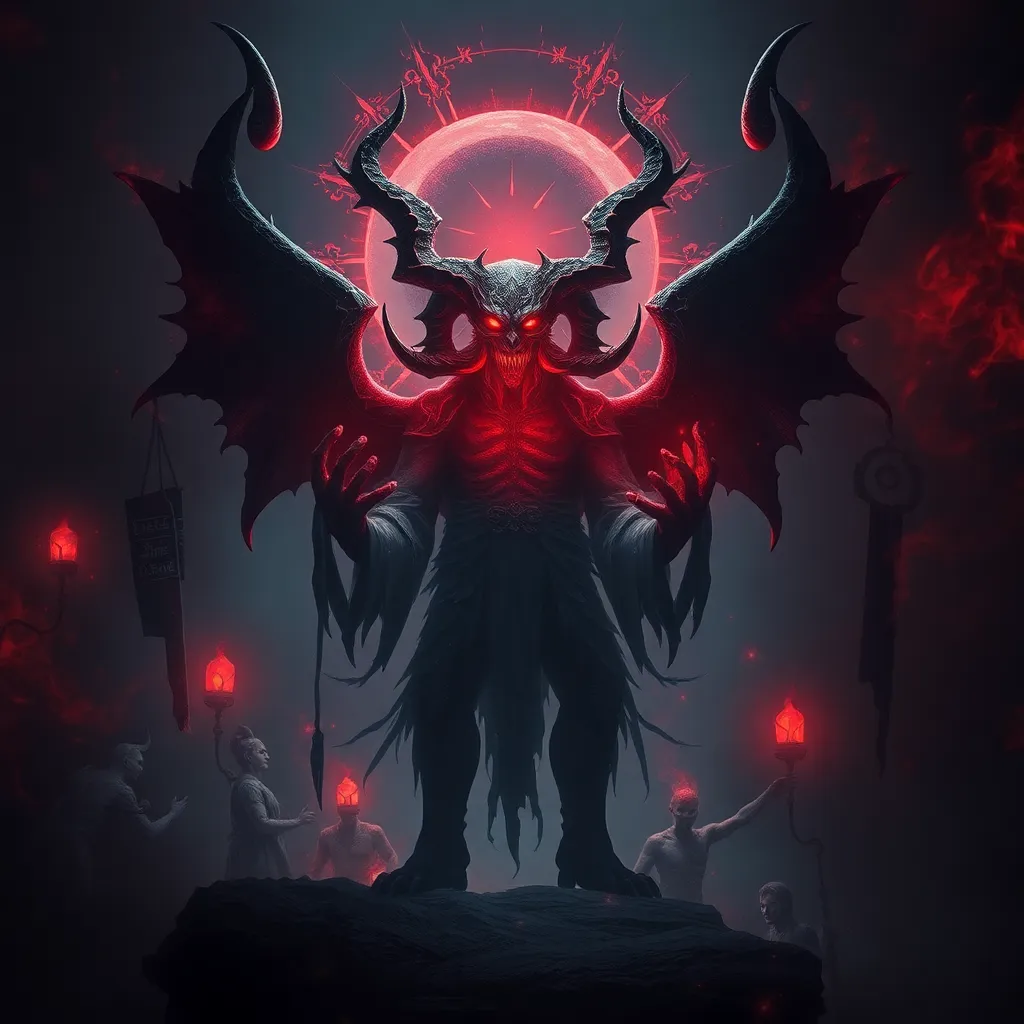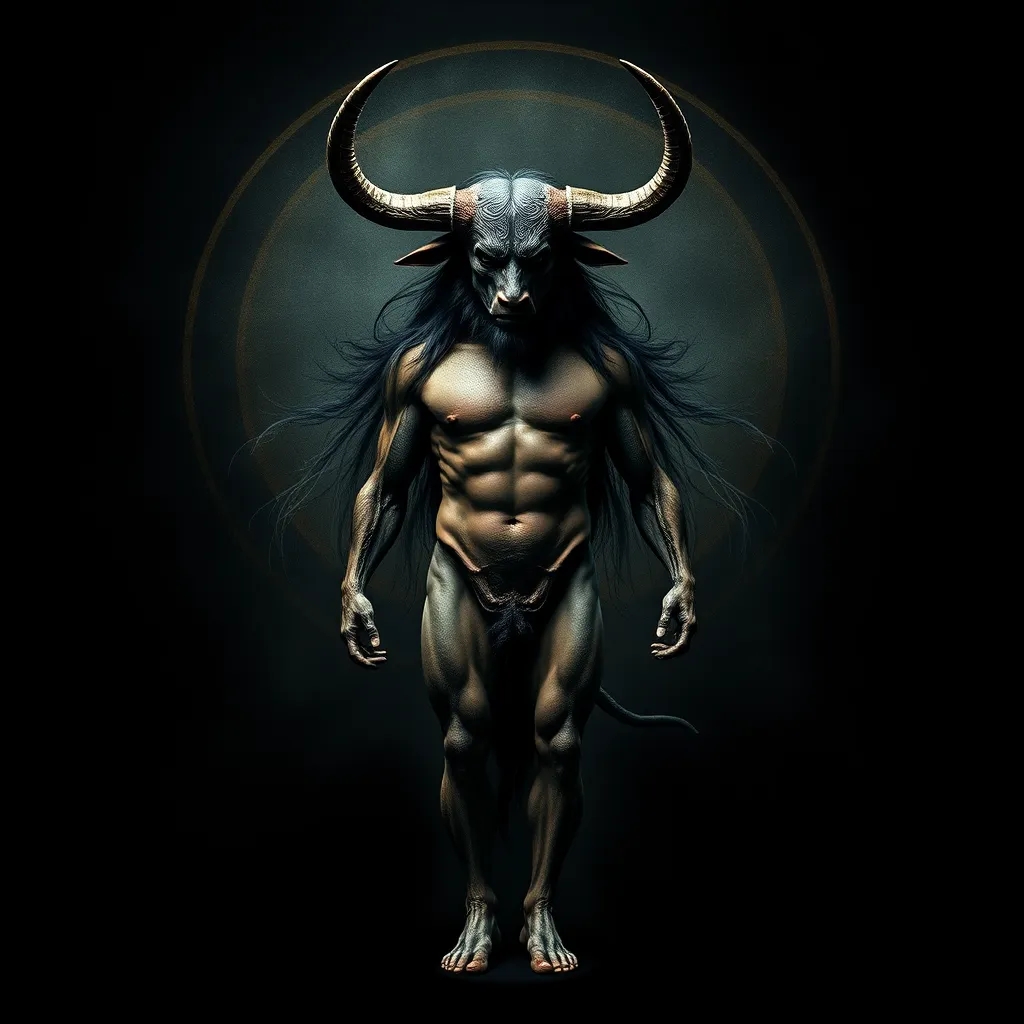The Empusa’s Legacy: Investigating the Demon’s Influence on Modern Beliefs and Practices
I. Introduction
The Empusa, a figure rooted deeply in ancient mythology, has intrigued scholars and enthusiasts alike for centuries. Known as a shape-shifting demon, the Empusa originated in Greek mythology and was often associated with seduction and malevolence, embodying both fear and fascination. This article aims to explore the profound impact of the Empusa on contemporary culture, examining how this ancient entity has influenced modern beliefs, practices, and artistic expressions.
Throughout this exploration, we will delve into the historical context of the Empusa, its representation in literature and art, psychological interpretations, its role in modern spiritual practices, gender dynamics, and its presence in popular culture today. By analyzing these themes, we will uncover the layers of meaning that the Empusa continues to hold in our society.
II. Historical Context of the Empusa
The Empusa finds its origins in ancient Greek mythology, where it was described as a demonic entity that could transform into various forms, often appearing as an alluring woman. This shape-shifting ability allowed the Empusa to seduce unsuspecting victims, leading to their demise or to drain their life force.
- Origins in Greek mythology: The Empusa was first mentioned in the works of early Greek writers, including Homer and later, Herodotus. It was characterized as a creature that served Hecate, the goddess of magic and witchcraft.
- Description of characteristics: The Empusa was often depicted as having a single leg made of brass, symbolizing its otherworldly nature. This striking imagery contributed to its fearsome reputation in ancient narratives.
- Comparison with other mythological figures: The Empusa shares similarities with other demons and mythological entities, such as Lilith from Jewish folklore and succubi from medieval European legends.
III. The Empusa in Literature and Art
The representation of the Empusa in classical literature plays a crucial role in understanding its cultural significance. In works by Homer, the Empusa is portrayed as a formidable presence, embodying the fears and desires of the ancient Greeks.
- Representation in classical literature: In “The Odyssey,” Homer illustrates the dangers posed by seductive figures like the Empusa, who lure heroes into perilous situations.
- Influence on visual arts: Throughout history, artists have captured the essence of the Empusa through various mediums, from ancient pottery to Renaissance paintings. These artworks often depict the demon in a way that evokes both allure and dread.
- Modern adaptations: In contemporary literature and popular culture, the Empusa has been reinterpreted in novels, films, and television shows, often serving as a symbol of feminine power and danger.
IV. Psychological Interpretations of the Empusa
The Empusa can also be analyzed through a psychological lens, where it serves as a potent symbol of the human psyche’s complexities. Its dual nature reflects the interplay between fear and desire, making it a compelling figure in the study of folklore and psychology.
- Symbol of fear and desire: The Empusa embodies the fear of the unknown and the allure of temptation, representing the darker aspects of human nature.
- Understanding human psychology: By examining the Empusa, we can gain insights into the fears and desires that shape human behavior and societal norms.
- Influence on contemporary theories: Modern psychological theories, such as those exploring the supernatural and mythological archetypes, often reference figures like the Empusa to illustrate the complexities of human emotion and experience.
V. The Empusa in Modern Spiritual Practices
In recent years, the Empusa has re-emerged as a figure of interest in various modern spiritual practices, particularly within the realms of occultism and neopaganism.
- Presence in modern occult practices: Many contemporary practitioners of magic and the occult draw inspiration from the Empusa, incorporating its symbolism into rituals and spellwork.
- Influence on neopagan and Wiccan beliefs: The Empusa’s characteristics resonate with themes of feminine power and autonomy, making it a relevant figure in modern pagan practices.
- Case studies of rituals: Some neopagan groups have developed rituals that honor the Empusa, exploring its dual nature as a seducer and protector, allowing practitioners to engage with its energy in transformative ways.
VI. The Empusa’s Impact on Gender and Feminist Discourse
The Empusa’s portrayal as a figure of seduction and danger has significant implications for discussions surrounding gender and feminist discourse. Its representation reflects societal views on femininity and power dynamics.
- Representation as a figure of seduction: The Empusa embodies the archetype of the femme fatale, challenging traditional gender roles and expectations.
- Analysis of gender dynamics: The fear instilled by the Empusa can be seen as a reflection of societal anxieties surrounding women who defy norms, highlighting the complexities of female empowerment.
- Feminist interpretations: Contemporary feminist scholars have begun to reclaim the narrative around the Empusa, viewing it as a symbol of strength and resistance against patriarchal oppression.
VII. The Empusa in Popular Culture Today
Today, the Empusa continues to capture the imagination of creators across various forms of media, from films and television to video games.
- Appearances in media: The Empusa has made its way into horror films, fantasy novels, and video games, often portrayed as a seductive antagonist or a misunderstood character.
- Role of social media: Platforms like Instagram and TikTok have revived interest in the Empusa, with users exploring its myths and adapting them into modern narratives.
- Public perception: The blending of ancient myth with modern storytelling has allowed the Empusa to evolve, reflecting contemporary fears and desires while maintaining its enigmatic allure.
VIII. Conclusion
In summary, the legacy of the Empusa is a testament to the enduring power of myth and its ability to shape contemporary beliefs and practices. From its historical roots in Greek mythology to its modern manifestations in literature, art, and spiritual practices, the Empusa remains a compelling figure that reflects the complexities of human experience.
As we continue to explore the intersections of myth, culture, and modern practice, the Empusa’s relevance in discussions of gender, psychology, and spirituality highlights the ongoing dialogue between ancient narratives and contemporary society. Ultimately, the Empusa serves as a reminder of the rich tapestry of human belief and the ways in which we navigate our fears and desires through the lens of myth.



